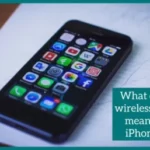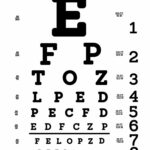Ever pondered the physiognomy of a crown? Seems straightforward, doesn’t it? Yet, beneath the shimmering surface lies a labyrinth of historical context, design evolution, and symbolic gravitas. Embark on this journey of discovery, and you’ll find that the question “What does a crown look like?” opens a portal to a world far more nuanced than you initially suspected.
Let’s dissect the anatomical framework. At its most fundamental, a crown is a head adornment, typically crafted from precious metals – gold, silver, platinum – and embellished with gemstones. However, the specific architecture diverges wildly based on era, culture, and the status of the wearer. A simple circlet of gold is as much a crown as a towering, gem-encrusted masterpiece.
The circlet, or diadem, is perhaps the most primordial form. Think of the laurel wreaths of ancient Greece or the simple gold bands worn by Roman emperors. These unpretentious designs denoted power and authority without resorting to ostentatious display. This simplicity also highlights the wearer, rather than distracting from them.
Then, there’s the addition of arches. These curved elements, often radiating from a central point on the circlet, add height and visual complexity. The number of arches can vary, typically signifying the level of sovereignty or the specific lineage of the monarch. Some crowns feature a single arch, while others boast a multitude, interwoven and embellished with intricate filigree.
Consider the orbs and crosses. Perched atop many crowns, the orb, a spherical representation of the world, symbolizes the monarch’s dominion over their realm. It is often surmounted by a cross, signifying divine right to rule – a potent assertion of authority legitimized by celestial mandate.
Gemstones, of course, are indispensable components. Diamonds, rubies, sapphires, emeralds – each gem holds a symbolic weight, contributing to the crown’s overall narrative. Red rubies often signify courage and passion, while blue sapphires represent wisdom and serenity. Diamonds, prized for their brilliance and durability, are emblematic of invincibility and enduring power.
Enameling also plays a role. This technique, involving the fusion of colored glass powder to metal, allows for the creation of intricate designs and vibrant color palettes. Enameling can depict heraldic symbols, religious iconography, or abstract patterns, further personalizing the crown and conveying specific messages.
Delve into the regional variations. European crowns, particularly those of the British monarchy, often feature a profusion of gemstones and intricate metalwork. The Crown Jewels of the United Kingdom, for instance, are renowned for their opulence and historical significance. The St. Edward’s Crown, used for coronations, is a prime example, a heavy gold frame laden with precious stones.
Conversely, Asian crowns, such as those worn by emperors of China or shoguns of Japan, tend to prioritize symbolism and craftsmanship over sheer material value. Dragons, phoenixes, and other mythological creatures are frequently incorporated into the design, reflecting cultural beliefs and ancestral veneration. Headwear often takes on a more elaborate and complex form to elevate the symbolism.
African crowns, meanwhile, exhibit a diverse range of styles, reflecting the continent’s rich tapestry of cultures and traditions. From the beaded headdresses of Nigerian chiefs to the elaborate gold ornaments of Ethiopian emperors, African crowns often incorporate natural materials like feathers, shells, and ivory, connecting the wearer to the land and its resources.
Beyond royalty, crowns also appear in religious contexts. Papal tiaras, for example, are triple crowns worn by the Pope, symbolizing his authority as pastor, teacher, and priest. These tiaras are often adorned with intricate embroidery and precious stones, reflecting the Church’s wealth and power.
Even within secular contexts, crowns can signify achievement and recognition. Beauty pageant winners wear crowns, signifying their triumph in a competition of beauty and talent. Sports champions are sometimes presented with crowns or laurel wreaths, symbolizing their victory and athletic prowess. The symbolic value endures.
So, what does a crown look like? It’s not merely a glittering object atop a head. It’s a potent symbol, a historical artifact, and a cultural marker. Its form is as varied as the cultures that have embraced it, its materials as diverse as the resources available. A crown encapsulates the dreams, aspirations, and power structures of a society, condensed into a single, captivating object. The crown is not merely an object, but a reflection of society.









Leave a Comment